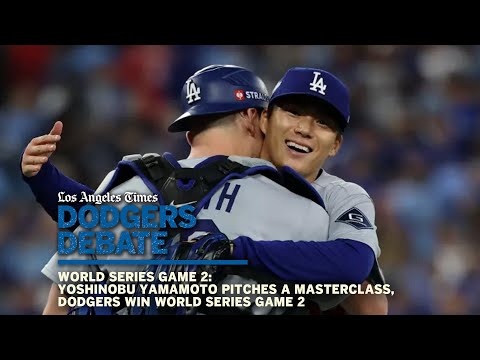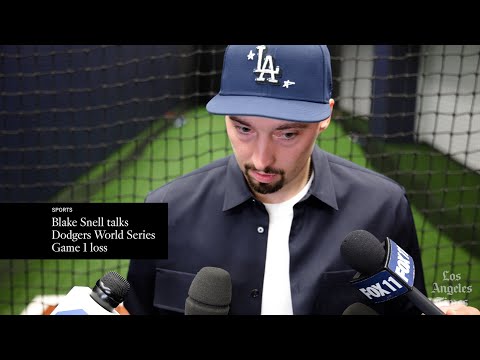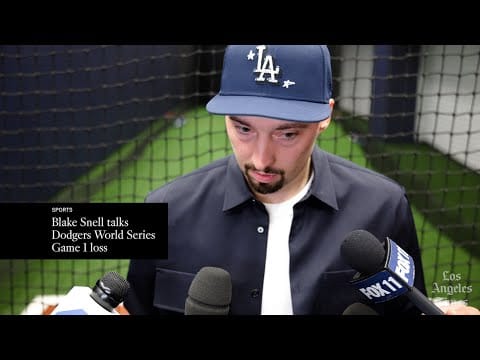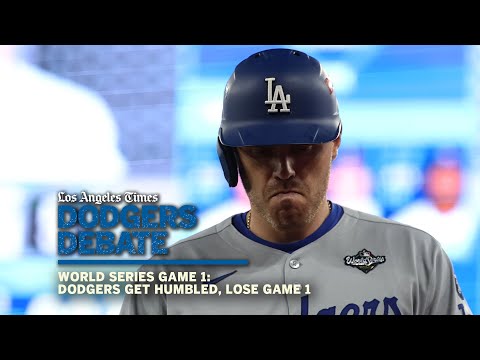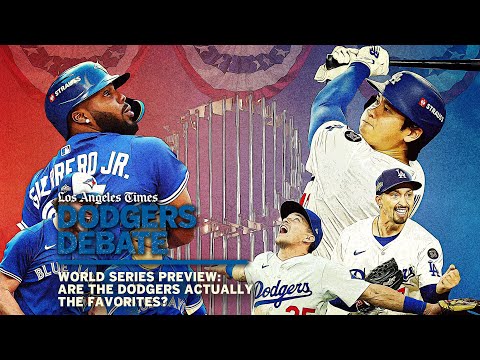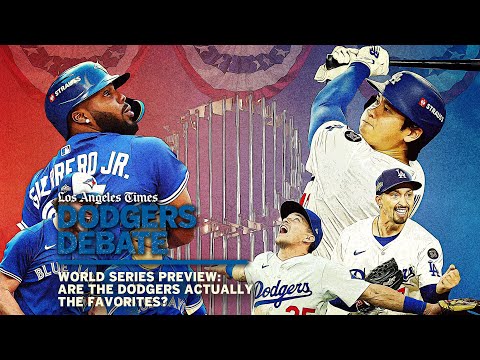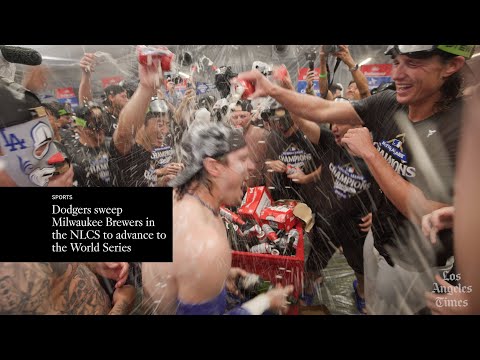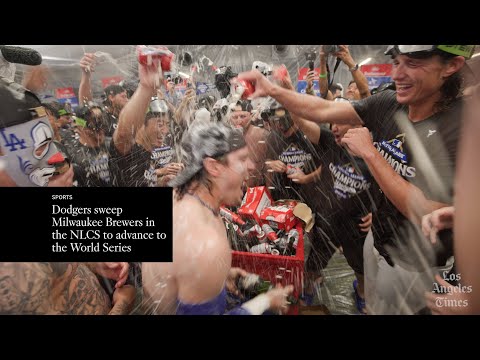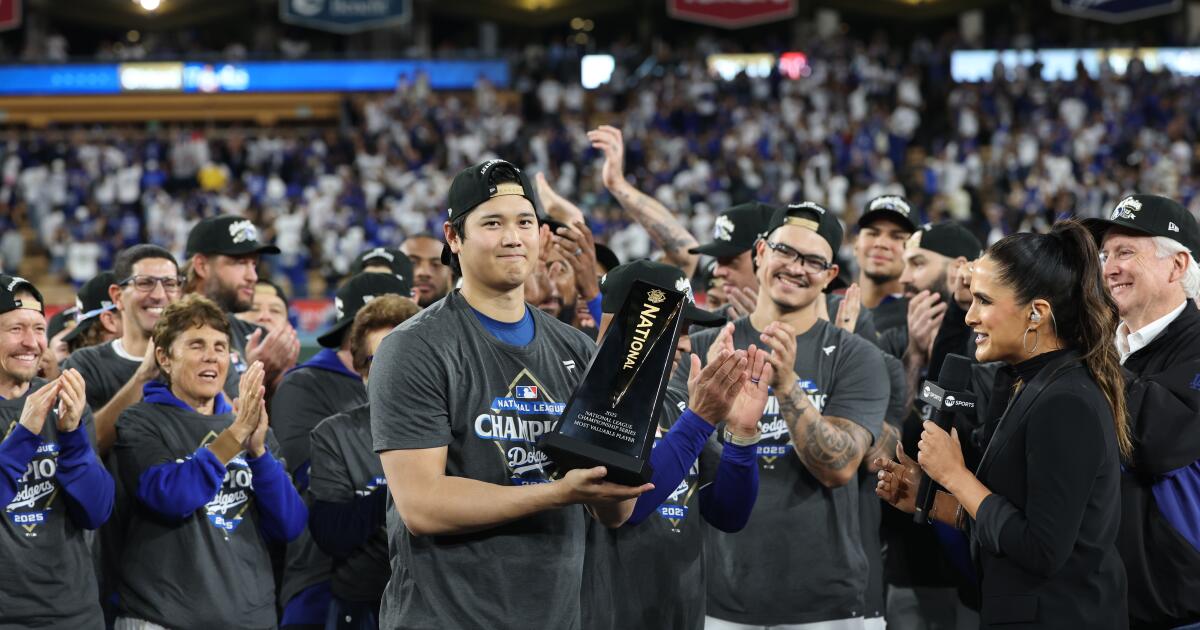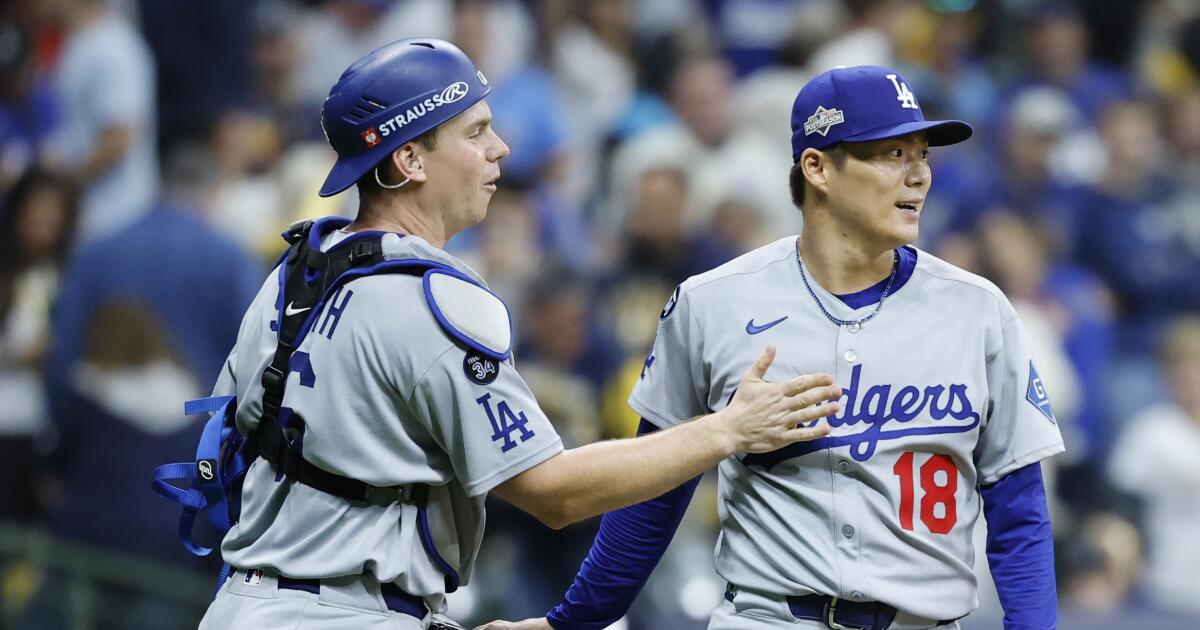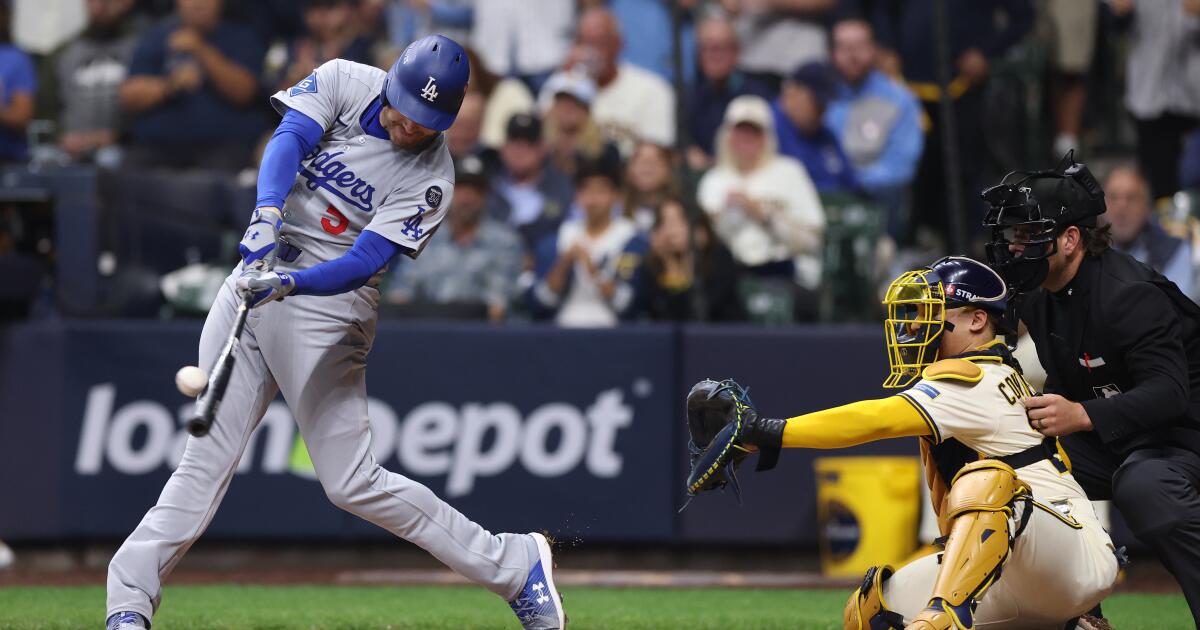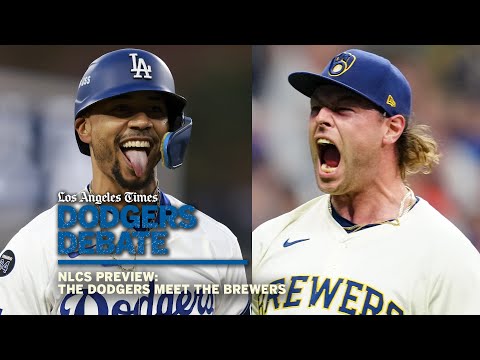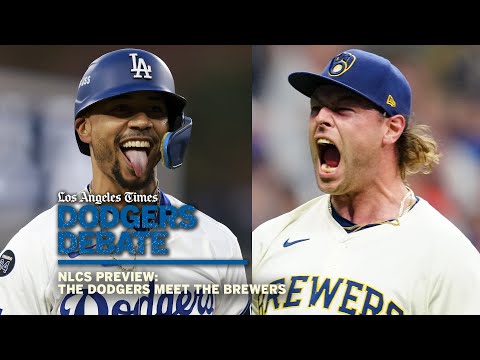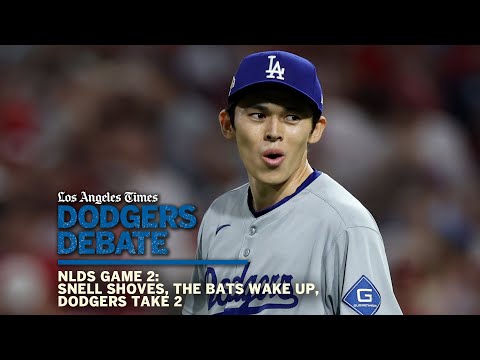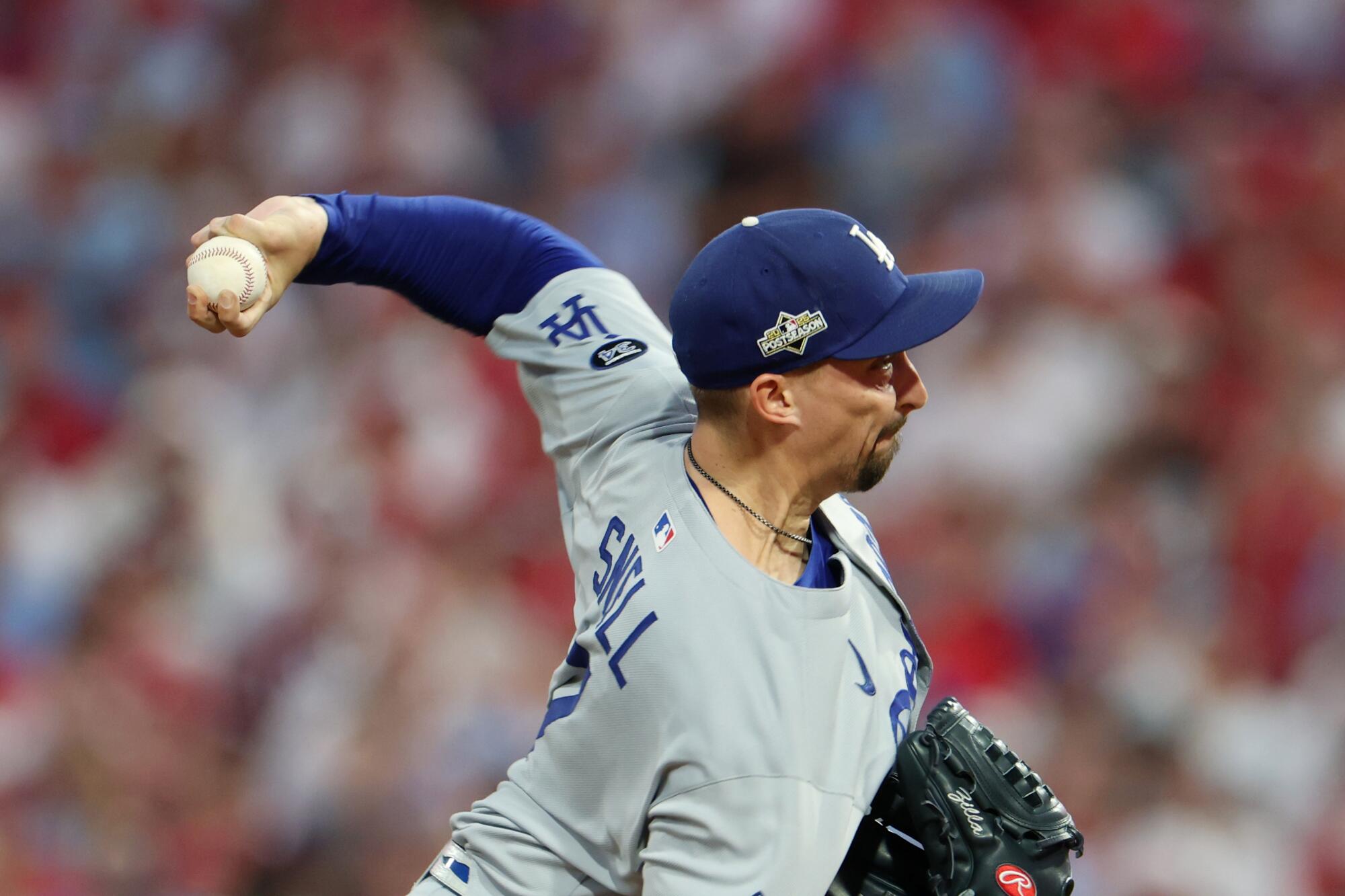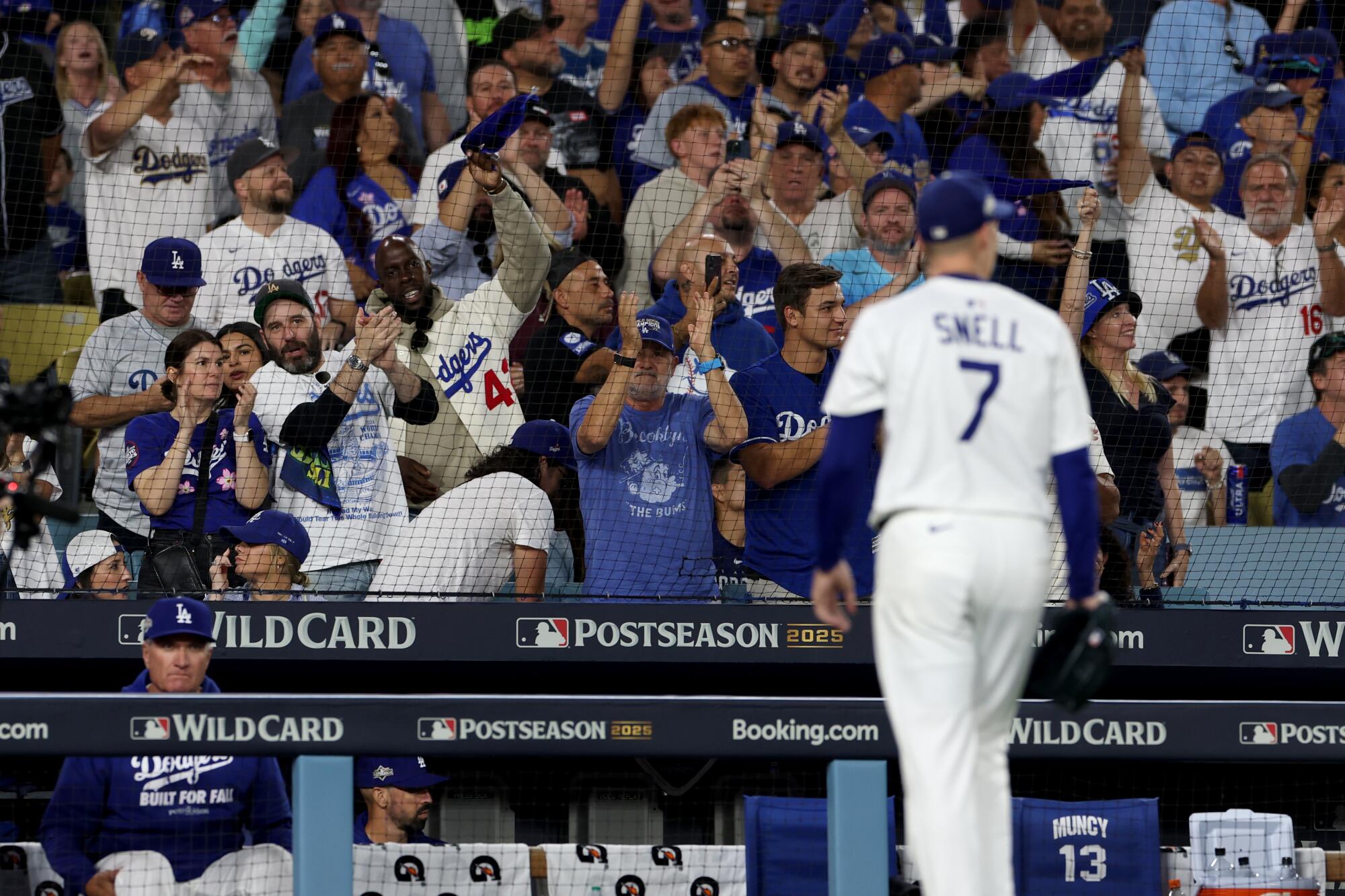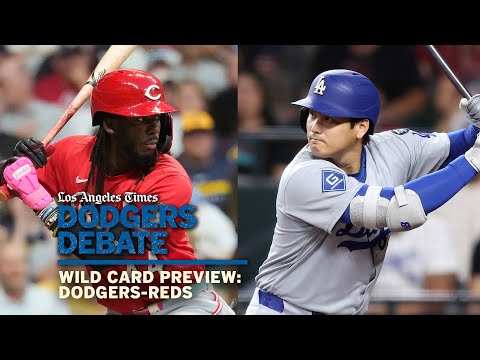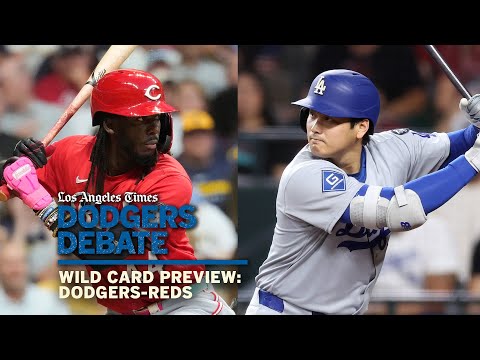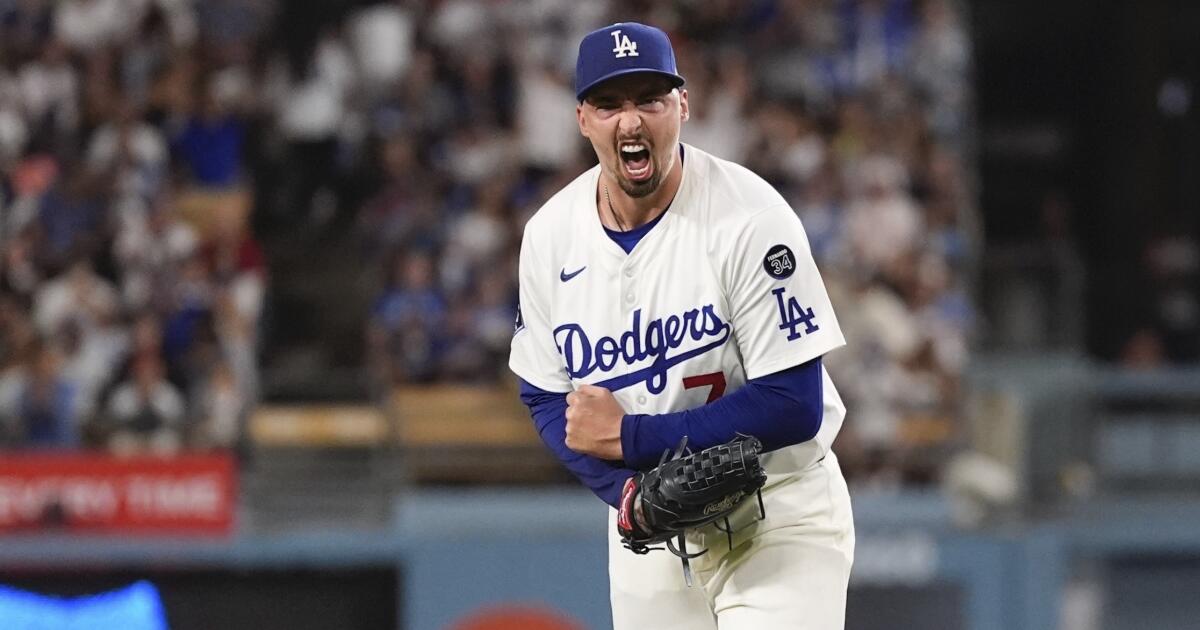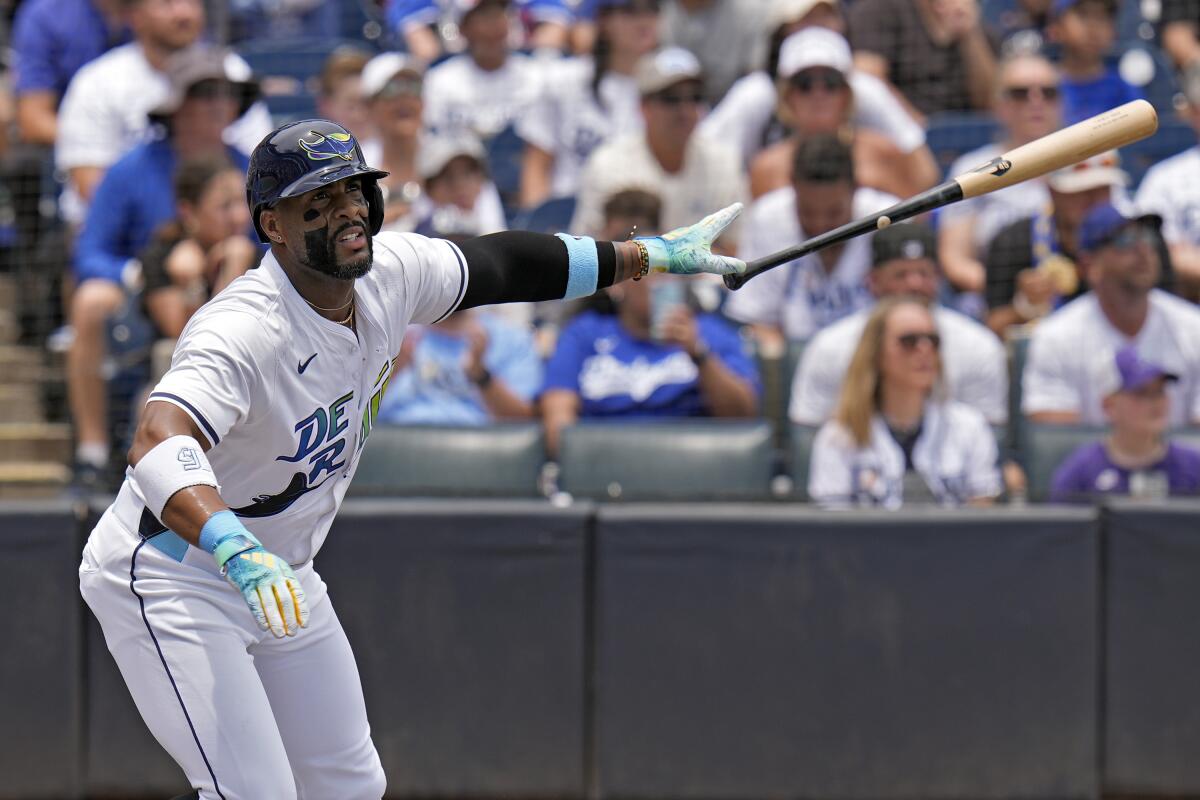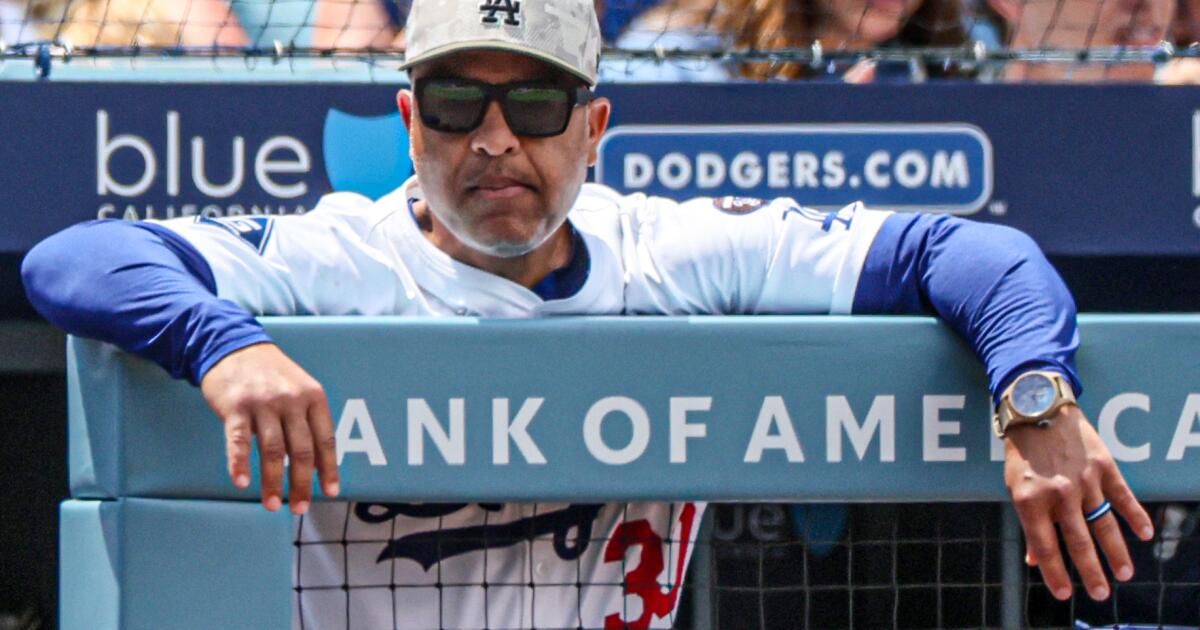Dodgers’ World Series pitching strategy centered on simplicity
TORONTO — There might be no greater reminder of how far the Dodgers have come than the opposing pitcher on Monday. When the World Series returns to Dodger Stadium for Game 3, the starting pitcher for the Toronto Blue Jays is scheduled to be Max Scherzer.
You may remember his brief tenure with the Dodgers four years ago, which ended with an elimination game in which Scherzer said he could not pitch. The Dodgers lost, the last domino in a cascade triggered by a front office that miscast its humans as widgets in a search for even the tiniest of edges.
Don’t just take my word for it. This was the word from Hall of Fame pitcher Pedro Martinez at the time: “Dodgers analytics dept really misused probably the best rotation in all of baseball. …They need to figure out a way to let starters be who they really are and let them pitch how they are used to.”
In the 2021 postseason, by choice, the Dodgers used an opener three times, a 20-game winner as a middle reliever, and a Hall of Fame starter as a closer. There would be no parade.
In the 2024 postseason, and not by choice, the Dodgers ran four bullpen games. There would be a parade.
In 2025, the Dodgers are simply throwing out a top-flight starting pitcher in every game. Presumably, there is nothing for the front office to overthink here.
Just sit back and enjoy the show — on Saturday, Yoshinobu Yamamoto’s second straight complete game show. This must be less stressful, at least.
“I don’t think it’s less stressful,” Dodgers pitching coach Mark Prior said to an inquiring middle-aged reporter with gray hair getting a little too noticeable. “We’ve got matching hair.”
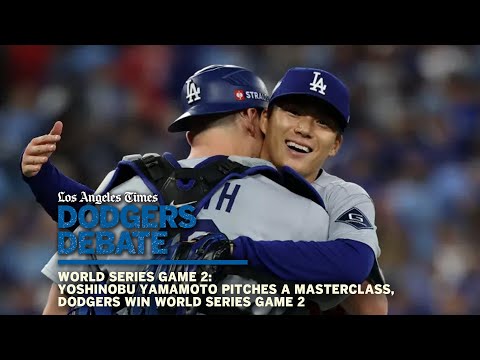
Still, there isn’t much mystery in the Dodgers’ 10-2 postseason record. In every game in which their starting pitcher has gotten an out in the sixth inning, they have won. In every game in which their starting pitcher has not gotten an out in the sixth inning, they have lost.
To the rotation of Yamamoto, Blake Snell, Tyler Glasnow and Shohei Ohtani, take a bow.
To Andrew Friedman and his front office, take a bow too. Just because your ownership provided you with a $1.35-billion rotation does not guarantee that you will leave well enough alone.
In the final month of the season, remember, the Dodgers entertained a flurry of ideas about how to best combine a talented rotation and an iffy bullpen into an effective October staff.
Would they deploy Ohtani in relief? Would they use their best arms as often as possible, as the Washington Nationals did in 2019, when they used their top three starters — Scherzer, Patrick Corbin and Stephen Strasburg — as starters and relievers?
The Dodgers let their starters be starters. The conventional wisdom does not always need to be challenged.
“Clearly, Blake Snell, Yama, Glasnow, Shohei, all really good pitchers,” Prior said. “I think we can all agree that they’re all really good pitchers, and any team would probably roll them out in a playoff game.
“So I don’t think this is any master plan.”
Said catcher Will Smith: “I think that’s just this team. We have four starters now that are pitching their best. … We’re just riding those guys.”
Dodgers pitcher Tyler Glasnow is set to start Game 3 of the World Series against the Toronto Blue Jays on Monday.
(Eric Thayer / Los Angeles Times )
That brings us back to 2021, when the front office decided the best way to approach the winner-take-all finale of the division series against the San Francisco Giants was to use reliever Corey Knebel as an opener, 20-game winner Julio Urías from the third through the sixth innings, closer Kenley Jansen in the eighth inning and Scherzer as the closer.
That is the kind of all-hands-on-deck approach better suited to the end of a World Series. The Dodgers won that game against the Giants, but Scherzer could not complete five innings in his first championship series start and said he could not take the ball for his next start, an elimination game.
“My arm’s been locked up the past couple of days,” Scherzer said then.
He said that he would be the one at risk if he were not honest with the Dodgers about his condition, rather than trying to push through.
“Guys, when they lie, they go out there and they take on too much, then they blow out,’’ he said. “That’s the ultimate risk here.”
That line of thought did not go over too well in some corners of the clubhouse. Urías was miffed because he believed the Dodgers did not believe in him. Walker Buehler, who started on short rest as a late replacement for Scherzer, gave up four runs in four innings. The Dodgers were eliminated.
Scherzer’s last World Series start, for the Texas Rangers in 2023, lasted three innings. He isn’t thinking about the Rangers, or for that matter the Dodgers.
“I wouldn’t be looking backwards at all for any motivation,’’ he said here Saturday. “I have plenty of motivation. I’m here to win and I’ve got a clubhouse full of guys who want to win too. So we’re a great team and that’s the only thing I need to think about.”
The only thing the Dodgers need to worry about on Monday, at least based on their postseason run: Can they get six or seven innings from Glasnow? If they can, they should be halfway to the World Series championship.

Highlights from the Dodgers’ 5-1 win over the Toronto Blue Jays in Game 2 of the World Series.
